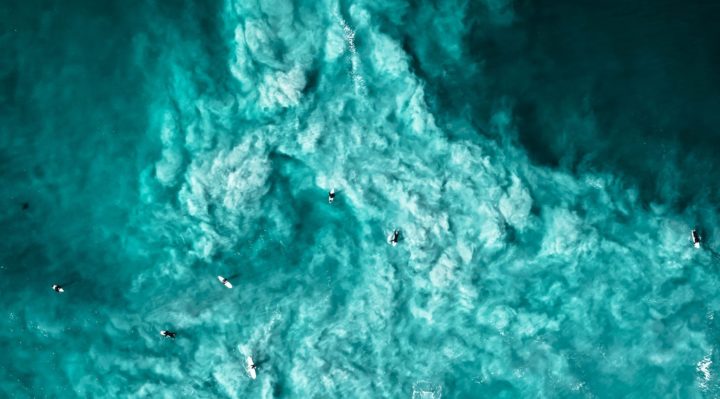- Ten SA coastal councils oppose Bight oil exploration, representing nearly 500,000 people
- SA’s biggest local government, Onkaparinga Council, voted its opposition in May
- Opposition has jumped dramatically since Kangaroo Island Mayor fronted Equinor AGM
 Ten South Australian coastal local governments representing nearly half a million people are flexing their muscle to oppose oil and gas exploration in the Great Australian Bight, with Adelaide’s City of Marion becoming the tenth local government to vote its opposition last week.
Ten South Australian coastal local governments representing nearly half a million people are flexing their muscle to oppose oil and gas exploration in the Great Australian Bight, with Adelaide’s City of Marion becoming the tenth local government to vote its opposition last week.
Local government opposition has stepped up dramatically since Kangaroo Island Mayor Peter Clements fronted the Statoil-Equinor annual general meeting in Norway in May to ask the oil giant to drop its Bight plans. Shortly after, South Australia’s biggest local government, Onkaparinga City, voted its opposition followed by the state’s third biggest council, City of Port Adelaide Enfield, last month.
The Marion Council motion states: “The City of Marion writes a letter to the National Offshore Petroleum Safety and Environmental Management Authority (NOPSEMA) requesting a moratorium on oil and gas exploration in the Great Australian Bight because of the minimal benefits to the City and its residents compared with the potential devastating impacts of an oil spill.”
Wilderness Society South Australia campaigner Cristel Chambers said: “The opposition to oil and gas exploration in the Great Australian Bight is growing dramatically, with 10 local governments representing nearly half a million South Australians now opposed to risky ultra-deepwater oil exploration in Australia’s southern seas.
“Four South Australian councils ‑ Port Adelaide, Marion, Onkaparinga and Alexandrina – have passed resolutions opposing oil and gas in the Bight since May when Kangaroo Island Mayor Peter Clements travelled to Statoil-Equinor’s AGM in Norway to ask the oil giant to drop its plans to drill in the Bight.
“In May more than a thousand people lined the shores across Australia to oppose offshore oil and gas exploration and calling Statoil-Equinor to drop its Bight plans at Hands Across the Sands events from New South Wales right across to Western Australia. About 500 people attended the Adelaide event at Semaphore Beach alone.
“Statoil-Equinor, however, has thumbed its nose at the growing community opposition and extraordinarily reasserted its intention to attempt risky ultra-deepwater drilling in the Great Australian Bight Marine Park next year while pushing for an extension to its drilling timeline. Statoil-Equinor’s continued dismissal of the community’s concerns brings the reputation of the entire offshore oil and gas industry into disrepute.
“Statoil-Equnior should start listening to the people and quit its plans to drill in the deep, rough and remote waters of the Great Australian Bight, just as BP and Chevron have already done.
“South Australian coastal councils have good reason to voice their opposition as under the Australian National Plan for Maritime Environmental Emergencies it’s local councils that will have to clear up the devastating effect of an oil spill, and will have to support their fishing, aquaculture, tourism and other existing industries from collapsing. And neither the local councils ‑nor indeed the state government – have the resources, the skills, the expertise or the money to do so.
“Furthermore, under Australia’s regulations the petroleum operator obligations do not cover compensation for loss and ongoing damage to parties such as the fishing or tourism industry; which fall under the category of third party liabilities and would be forced to follow alternate legal options and the inevitable time delays and costs should a spill occur.
“The international Hands Across the Sand movement grew from the Deepwater Horizon disaster in 2010 when 800 million litres of oil spewed into the Gulf of Mexico.
“The Great Australian Bight waters are deeper, more treacherous and more remote than the Gulf of Mexico. BP’s own oil spill modelling showed a spill from an ultra-deepwater well blowout in the Great Australian Bight could impact anywhere along all of southern Australia’s coast, from Western Australia right across to Victoria through Bass Strait to NSW and around Tasmania. A spill could hit Adelaide in 20 days and could hit Port Lincoln and Kangaroo Island in 15 days.
“A spill would be devastating for South Australia’s $442 million fishing industry and its tourism industries in coastal regions, worth more than $1 billion. The two industries employ more than 10,000 full-time positions.
“There is no established offshore oil and gas industry in South Australia to deal with a disaster. More than 6800 boats were involved in the Gulf cleanup but the South Australian Oyster Growers Association says that SA and neighbouring states probably have only 20 vessels that could operate safely in the waters where BP-Statoil planned to drill.
“The Great Australian Bight is a unique, pristine marine environment, with 85 per cent of its marine species found only in these waters. The Bight is a haven for 36 species of whales and dolphins, including the world’s most important nursery for the endangered southern right whale. The Bight is Australia’s most important sea lion nursery and supports seals, orcas, giant cuttlefish, great white sharks and some of Australia’s most important fisheries.”
